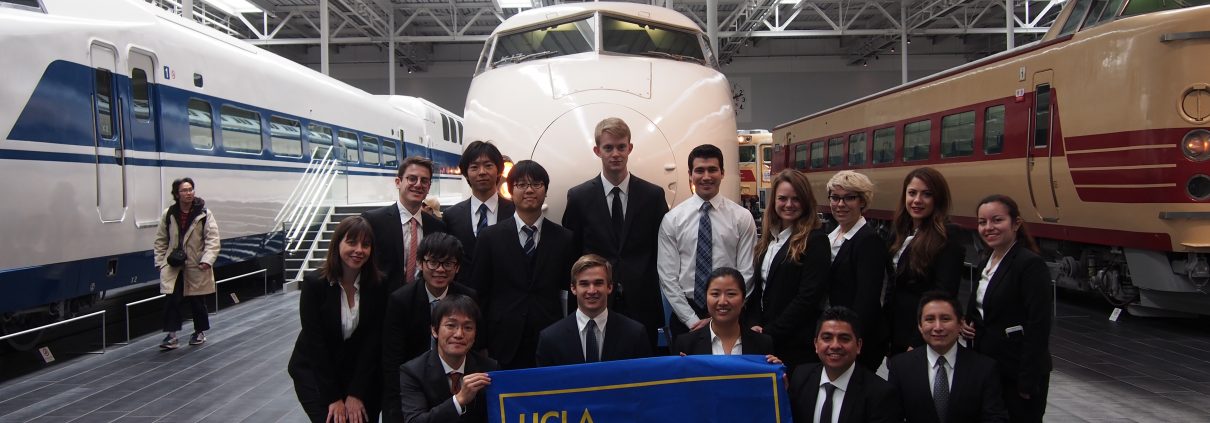Transportation Policy and Plannig in Japan: Reflections of the Japan Spring Break Trip
By Wendy Wang, Master’s Student in Public Policy
My original aim for this trip was to learn about the transportation policy and regional development strategies in Japan. However, this traveling experience highly exceeded my expectations by opening my eyes to the pivotal role of public transportation in shaping people’s lifestyle, culture and economy. Even though I became accustomed to crowds growing up in a metropolitan area of China, the tremendous flow of people during rush hour at the Japanese subway station still astonished me. Yet, it was the capability of Japan’s infrastructure network to support such a dense population that moved me the most.
With respect to transportation policy, the characteristics of safety, punctuality and convenience are strengths of Japan’s public transportation system, and should be emphasized within future transportation planning in Los Angeles. The exhibits at the SCMAGLEV and Railway Park Museum demonstrated the historical significance and technological progress of high-speed rail development with a focus on Shinkansen trains and Superconducting Maglev. The large-scale railway diorama vividly displayed the indispensable relationship between public transportation and people’s life.
I have long known that public transportation in Japan is famous for its safety and punctuality, but my visit to the Bullet Train Operation Center of the Central Japan Railway Company allowed me to truly understand the critical reasons behind it. Through the glass window of the central operating room, we witnessed the staff monitoring the train schedule. According to the speaker, the staff in the central control room monitors and analyzes the time and location of each train to ensure safety and punctuality. Additionally, there is an extensive emphasis on drivers’ safety education and training, as well as the meticulous maintenance after operating hours.
The significance of the convenience attribute is two-fold. Firstly, passengers are able to access a variety of lines and means of transportation, from metro to buses to high-speed rail, all with one card that can be loaded and tapped at various entrances. Even though different companies are operating, passengers have a convenient universal payment method that saves time and eliminates the nuisance of buying multiple tickets and dealing with cash. Secondly, the interconnected network of stations, commercial facilities, and direct access to major buildings is designed in such a way to not only decrease passengers’ travel time, but also boost the surrounding businesses.






Leave a Reply
Want to join the discussion?Feel free to contribute!